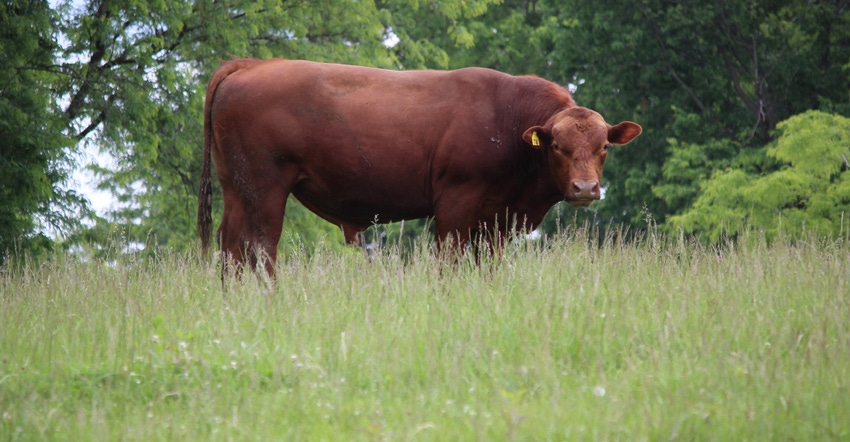January 14, 2021

It is a typical mantra of any sports coach — the best athletes are made during the offseason. The same can be said of bulls.
How a cattle producer manages his bulls in the winter affects success during the breeding season. “Bull management is important to reproductive success and optimum profitability of a cattle operation,” Patrick Davis, University of Missouri Extension regional livestock field specialist, says in a news release.
Keeping a bull in proper condition requires cattle farmers to focus on body condition, reduce stress and allow for adequate exercise.
Divide bulls by build
Davis points to winter nutrition habits as key to maintaining an optimum body condition score.
He recommends a BCS of 6 before the next breeding season. Based on external appearance, bulls with this score will carry a modest amount of extra fat cover.
One management strategy to promote this healthy weight is to feed and manage bulls based on age, Davis says. Cattle producers should separate yearling, 2-year-old and mature bulls into different feeding groups.
Often times, bulls lose between 100 and 400 pounds during the breeding season. Therefore, nutrition in the offseason is important. Separating bulls by age and size allows farmers to target nutrient needs based on size along with growth potential, Davis says. Beef producers should develop feed rations to fit each feeding group.
Limit cold stress
Winter months can result in cold stress for bulls. This stress could influence fertility during the next breeding season.
Since sperm is produced over 60 days before breeding a cow, Davis explains, cold stress in late winter may negatively affect sperm production and fertility, resulting in low fertility early in the spring breeding season.
Also, cold stress may cause frostbite on the scrotum and sheath, which negatively affects a bull’s ability to breed cows, resulting in poor conception rates in the upcoming breeding season.
Davis urges cattle producers to provide proper shelter and cover for bulls to reduce cold stress over the winter. Whether out on pasture or in a lot, access to a barn or lean-to gives bulls an opportunity to stay warm.
Make them move
Exercise before the breeding season is important to make sure bulls are physically ready for breeding, Davis says.
Since many bulls service females in pastures, they are accustomed to walking long distances. The breeding process demands physical activity. Therefore, Davis says cattle producers should make exercise a part of winter management.
Spacing out water, feed and mineral access in a pasture can promote exercise by requiring bulls to walk, building up their stamina.
However, if bulls are pulled into a lot for winter, Davis says, beef producers must watch conditions. Mud can lead to hoof problems that will affect the bull’s ability to do his job come breeding time, he notes.
Davis urges cattle producers to implement strategies in bull lots to reduce muddy conditions. It can include occasional cleaning. If confined in a building, make sure to turn or replace bedding to keep it dry.
Check with a vet
“As you prepare bulls for the next breeding season, work with a veterinarian to make sure bulls are physically and reproductively sound, as well as in proper health prior to turnout,” Davis says.
To determine physical and reproductive soundness, Davis urges cattle producers to schedule a bull breeding soundness exam with their veterinarian within 30 to 60 days before the breeding season. It is a good time for booster vaccinations and parasite control.
Ultimately, winter should be a time to focus on the health and well-being of bulls before they enter the breeding season.
Source: University of Missouri Extension, which is solely responsible for the information provided and is wholly owned by the source. Informa Business Media and all its subsidiaries are not responsible for any of the content contained in this information asset.
You May Also Like




